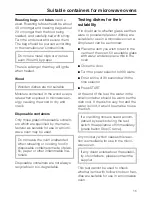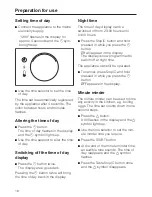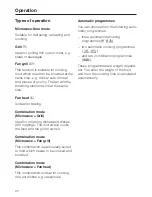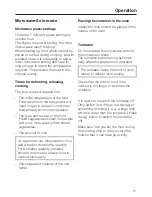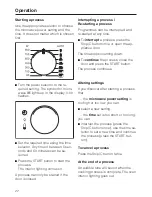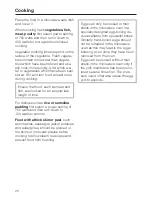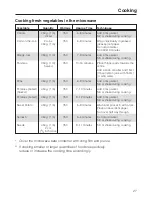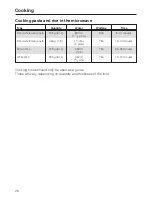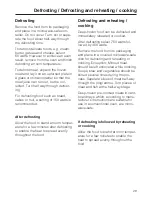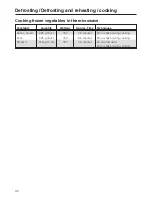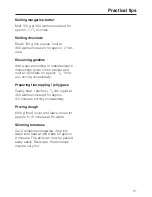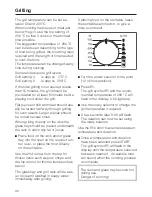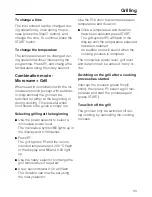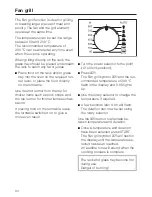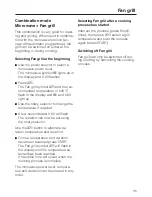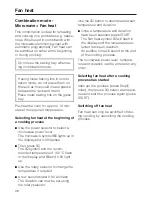
Place the food in a microwave-safe dish
and cover it.
When cooking fresh
vegetables, fish,
meat, poultry
first select power setting
of 750 watts and then turn it down to
450 watts for more gentle continued
cooking.
Vegetable cooking times depend on the
texture of the vegetable. Fresh vegeta-
bles contain more water than vegeta-
bles which have been stored and usu-
ally cook more quickly. Add a little wa-
ter to vegetables which have been kept
stored. Stir and turn food at least once
during cooking.
Ensure that food, such as meat and
fish, are cooked for an appropriate
length of time.
For dishes such as
rice or semolina
pudding
first select a power setting of
750 watts and then turn down to
150 watts to simmer.
Food with a thick skin or peel
, such
as tomatoes, sausages, jacket potatoes
and aubergines, should be pierced or
the skin cut in several places before
cooking to allow steam to escape and
prevent food from bursting.
Eggs can only be cooked in their
shells in the microwave oven in a
specially designed egg-boiling de-
vice available from specialist shops.
Similarly, hard-boiled eggs should
not be reheated in the microwave
oven as this may lead to the eggs
bursting, even once they have been
removed from the oven.
Eggs can be cooked without their
shells in the microwave oven only if
the yolk membrane has been punc-
tured several times first. The pres-
sure could otherwise cause the egg
yolk to explode.
Cooking
26




